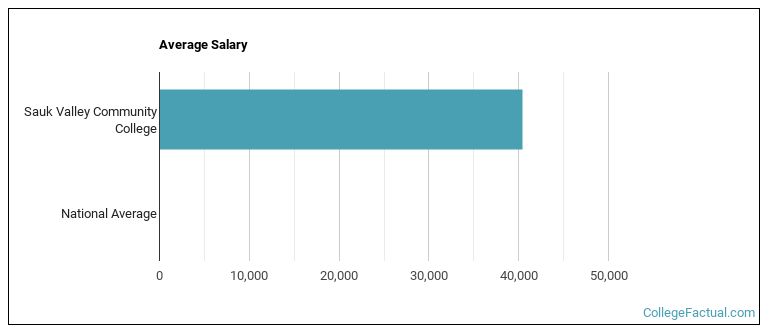 by our College Data Analytics Team
by our College Data Analytics TeamExplore the best ranked schools for the programs you are most interested in.
Sauk Valley Community College landed the #1,367 spot in College Factual's 2025 ranking of best overall colleges in the United States. The higher ed experts analyzed 2,152 colleges and universities across the nation to determine this ranking.
Sauk Valley Community College also holds the #54 spot on the Best Colleges in Illinois ranking.
As long as you meet basic requirements, you should not have any trouble getting into Sauk Valley Community College since the school has an open admissions policy. Still, be sure to submit any requested materials and that your application is completed in full.
With a student to faculty ratio of 13 to 1, Sauk Valley Community College is about average in this regard as the nationwide rate is 15 to 1. While this does not translate directly to class size, it's a good indicator of how much time professors will have to spend with their students on a one-on-one basis.
Another measure that is often used to estimate how much access students will have to their professors is how many faculty members are full-time. The idea here is that part-time faculty tend to spend less time on campus, so they may not be as available to students as full-timers.
The full-time faculty percentage at Sauk Valley Community College is 48%. This is comparable to the national average of 47%.
The freshmen retention rate tells us what percentage of first-year, full-time students choose to continue on to their sophomore year at a particular school. The rate at Sauk Valley Community College is 68%, which is about average when compared to the national rate of 68%.
During the 2017-2018 academic year, there were 1,386 undergraduates at Sauk Valley Community College with 670 being full-time and 716 being part-time.
| $0-30 K | $30K-48K | $48-75 | $75-110K | $110K + |
|---|---|---|---|---|
| $5,939 | $7,387 | $10,303 | $12,914 | $13,321 |
The net price is calculated by adding tuition, room, board and other costs and subtracting financial aid.Note that the net price is typically less than the published for a school. For more information on the sticker price of Sauk Valley Community College, see our tuition and fees and room and board pages.
It's not uncommon for college students to take out loans to pay for school. In fact, almost 66% of students nationwide depend at least partially on loans. At Sauk Valley Community College, approximately 9% of students took out student loans averaging $3,914 a year. That adds up to $15,656 over four years for those students.
Get more details about paying for Sauk Valley Community College.

See which majors at Sauk Valley Community College make the most money.
Get more details about the location of Sauk Valley Community College.

Contact details for Sauk Valley Community College are given below.
| Contact Details | |
|---|---|
| Address: | 173 Illinois Rt 2, Dixon, IL 61021-9112 |
| Phone: | 815-288-5511 |
| Website: | www.svcc.edu/ |
| Most Popular Majors | Bachelor’s Degrees | Average Salary of Graduates |
|---|---|---|
| Liberal Arts General Studies | 273 | NA |
| Practical Nursing & Nursing Assistants | 122 | NA |
| Precision Metal Working | 39 | NA |
| Ground Transportation | 29 | NA |
| Nursing | 26 | NA |
| Design & Applied Arts | 26 | NA |
| Business Administration & Management | 23 | NA |
| Allied Health Professions | 20 | NA |
| Biological & Physical Science | 18 | NA |
| Information Technology | 9 | NA |
Online learning is becoming popular at even the oldest colleges and universities in the United States. Not only are online classes great for returning adults with busy schedules, they are also frequented by a growing number of traditional students.
In 2022-2023, 687 students took at least one online class at Sauk Valley Community College. This is an increase from the 678 students who took online classes the previous year.
| Year | Took at Least One Online Class | Took All Classes Online |
|---|---|---|
| 2022-2023 | 687 | 195 |
| 2021-2022 | 678 | 184 |
| 2020-2021 | 1,170 | 946 |
| 2018-2019 | 759 | 207 |
Learn more about online learning at Sauk Valley Community College.
Footnotes
*The racial-ethnic minorities count is calculated by taking the total number of students and subtracting white students, international students, and students whose race/ethnicity was unknown. This number is then divided by the total number of students at the school to obtain the racial-ethnic minorities percentage.
References
More about our data sources and methodologies.